At 5,000 feet above sea level, where mist tangles through ancient pine forests, Ziro Valley isn’t just another stop on your trip—it’s the kind of place that sticks with you.
The Apatani people, with their face tattoos and centuries-old traditions, call this valley home. Here, golden rice paddies stretch to the horizon, and festivals feel like something straight out of a lost era.
I stayed in a big house for a week, balancing online work and exploration. The quiet nights, friendly locals, and otherworldly beauty of rice fields at sunset made this trip unforgettable. But let’s cut to the chase: Ziro isn’t for everyone.
Planning a trip to India at some point? Check out my free ebook to help you save time and money, and avoid headaches. After +4 years in India, I’ve made plenty of mistakes, and this guide shares what I’ve learned so you can have a smoother trip.
Why Visit Ziro Valley?
- Authentic tribal culture – Meet the Apatani people, known for their sustainable rice farming and unique tattoos.
- Breathtaking landscapes – Endless terraced rice fields, misty forests, and some of the best sunset views in India.
- Ziro Music Festival – India’s best indie music fest in an outdoor dream setting (if you time it right).
- Offbeat & peaceful – Unlike crowded hill stations, Ziro is quiet, slow, and immersive.
However there are some downsides to consider:
- Food isn’t great at most restaurants – You’ll have to find a homestay or traditional meal to experience real Apatani food.
- Not a ton of activities – Perfect for slow travelers, but if you need constant adventure, it might not be for you.
- Getting here takes effort – Expect a long drive from the airport with limited transport options.
What This Guide Covers:
- Best places to stay – Budget guesthouses, comfy resorts, and hidden-gem homestays.
- Top things to do – Villages, temples, bamboo forests, cultural festivals, and more.
- Where to eat – The best traditional Apatani meals & what to avoid.
- Essential travel tips – How to get here, costs, permits, and pro tips to make your trip smooth.
Let’s dive into where to stay first!
Here’s a free Ziro Valley packing checklist you can download and use for free.
Want to know the best time to visit the rest of India on your trip? Check out the full post.
Where to Stay in Ziro Valley
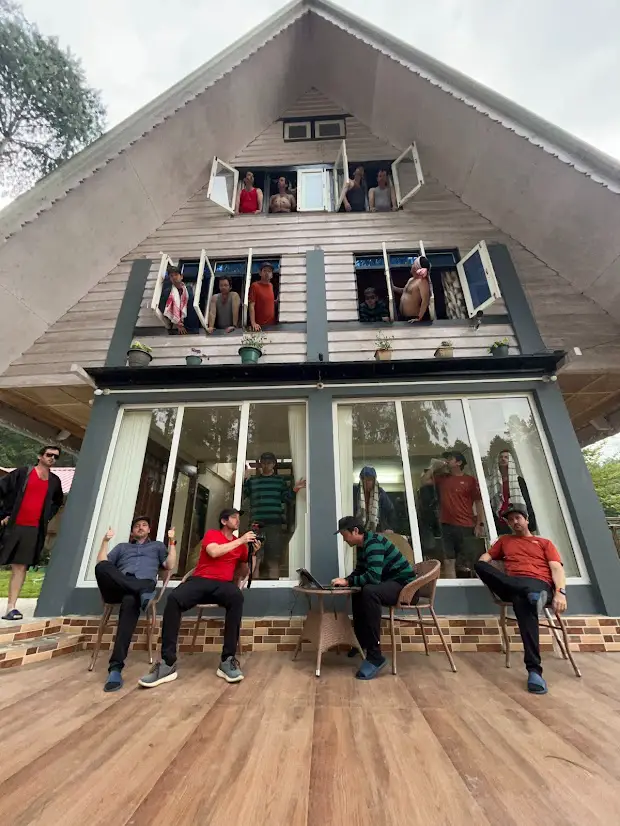
Ziro Valley doesn’t have big hotels, but that’s part of its charm. Instead, you’ll find wooden cottages, cozy homestays, and small guesthouses that immerse you in the valley’s beauty and Apatani culture. Staying here means waking up to misty rice paddies, sipping local Apong (rice beer) by a fireplace, and falling asleep to the sound of absolute silence.
Lempia Ude Homestay – Best Traditional Stay with Amazing Hospitality
If you want a warm, authentic Apatani experience, this homestay in Lempia village is hard to beat. Guests rave about the hospitality, home-cooked food, and cozy wooden interiors. The rooms have a traditional fireplace, and some even come with bed warmers and a balcony overlooking the valley. A highlight here is the family meals, where you can try local dishes made from vegetables grown in their garden.
The hosts go above and beyond, offering kiwi-plucking sessions from their orchard and sharing stories about Ziro’s traditions. Some well-known musicians and artists have stayed here during the Ziro Music Festival, making it a special place for culture lovers.
That said, Lempia Ude is more about the experience than luxury—it’s a homestay, not a resort. WiFi and phone signals can be weak, and you should be prepared for simple village life. But if you’re looking for comfort, culture, and incredible hospitality, this is one of the best places to stay in Ziro.
- Price: ₹3,000 – ₹4,000 per night
- Phone: +91 94366 31844
- Address: Lempia, Ziro, Arunachal Pradesh 791120
- Best for: Travelers wanting an authentic cultural experience
- Avoid if: You need strong WiFi or a modern hotel
- Other travelers say:
- Pros: Spotless rooms, delicious home-cooked meals, welcoming hosts
- Cons: Weak internet, can be hard to book during festivals
- Google Maps: Lempia Ude Homestay
Ziro Valley Resort – Best for a Scenic Getaway
This peaceful retreat in Siiro Village is one of Ziro’s most scenic stays. The wooden cottages have big glass windows overlooking the rice fields, making it an ideal place to relax and enjoy nature. There’s a restaurant on-site, so you don’t have to worry about finding food, but it’s still a bit far from the main town.
If you’re looking for a quiet stay with stunning views, this is a great choice. However, it’s pricier than other options, and some guests mentioned that the food is average for the cost.
- Price: ₹3,000 per night
- Phone: +91 98569 10173
- Address: Siiro Village, Hapoli, Ziro, Arunachal Pradesh 791120
- Best for: Couples, solo travelers, and those wanting a peaceful retreat
- Avoid if: You want budget-friendly or centrally located accommodation
- Other travelers say:
- Pros: Beautiful views, cozy wooden cottages, peaceful atmosphere
- Cons: Expensive for Ziro, food could be better
Siiro Resort – Best Mid-Range Stay with Local Charm
Siiro Resort blends modern comforts with traditional Apatani architecture, making it a great mid-range option. The rooms are spacious, clean, and come with hot showers, which isn’t guaranteed everywhere in Ziro. The in-house restaurant serves local food, and it’s a popular choice for travelers wanting a balance between comfort and culture.
However, some guests noted that the food service can be slow, so it’s best to order early. Also, it’s not the cheapest option in town, but the extra comfort makes it worth it for many.
- Price: ₹3,500 per night
- Phone: +91 80140 50952
- Address: Siiro Village, Ziro, Arunachal Pradesh
- Best for: Travelers who want comfort with a local touch
- Avoid if: You’re on a tight budget
- Other travelers say:
- Pros: Spacious, clean rooms, hot water, great Apatani design
- Cons: Food service can be slow, slightly pricey
Ziro Palace Inn – Best Budget Stay in Town
If you’re looking for a budget stay in Hapoli town, Ziro Palace Inn is one of the most affordable options. It’s basic but central, meaning you’ll be close to restaurants, markets, and transport. The rooms are small and simple, and the walls are thin, so it’s not the quietest place. But for travelers on a tight budget, it’s a convenient, no-frills stay.
- Price: ₹1,000 per night
- Phone: +91 76695 03993
- Address: Biirii Village, PO & PS Hapoli, Ziro, 791120
- Best for: Budget travelers & backpackers
- Avoid if: You want a quiet or luxurious stay
- Other travelers say:
- Pros: Cheap, good location, easy to get taxis
- Cons: Thin walls (can be noisy), very basic rooms
Nomo’s Airbnb – Best Homestay Experience
This is where I stayed — a big house with huge windows, a peaceful garden, and friendly hosts. It was perfect for working online while exploring. It was also way more than I needed but I did it for the wifi.
Every morning a cute yet tough grandma comes to take care of the garden. Then sometimes a guy comes with a lot of bamboo. There are a couple of ponds and places to relax with a fire. The noises here are scary at night as the frogs sing a full opera I believe.
If you have a family this place is perfect. If you have a few friends, it’s good. If you are just one person and working, it’s also pretty good if you want a place you’ll never forget.
- Price: Check with host
- Location: A little outside Hapoli but still accessible.
- Amenities: Multiple bedrooms, strong wifi, a beautiful garden, and a friendly host.
- Best for: Families, digital nomads, and long-term stays.
- Avoid if: You prefer a hotel-style experience.
- Other travelers say:
✅ Spacious, homely, quiet at night.
❌ Creepy at night if you’re alone! - Host Contact: +91 9863427584
KASA Resort
KASA Resort is one of the more modern stays in Hapoli, offering comfortable rooms with air conditioning, private bathrooms, and an in-house restaurant. The resort has a garden, a sun terrace, and bike rentals, making it a good base for travelers who want a blend of comfort and accessibility. The on-site restaurant, Grand Feast, serves Indian, Chinese, and Assamese cuisine.
- Price: ₹3,500 – ₹5,000 per night
- Phone: +91 76408 22739
- Address: Hapoli, Ziro, Arunachal Pradesh 791120
- Best for: Travelers who prefer modern amenities and an in-house restaurant
- Avoid if: You’re looking for a homestay experience or a more budget-friendly option
- Other travelers say: The rooms are spacious, and the staff is friendly, but some facilities could use maintenance.
Want my favorite India travel hacks learned from +5 years in India? Check out all the tips.
Things to Do in Ziro Valley
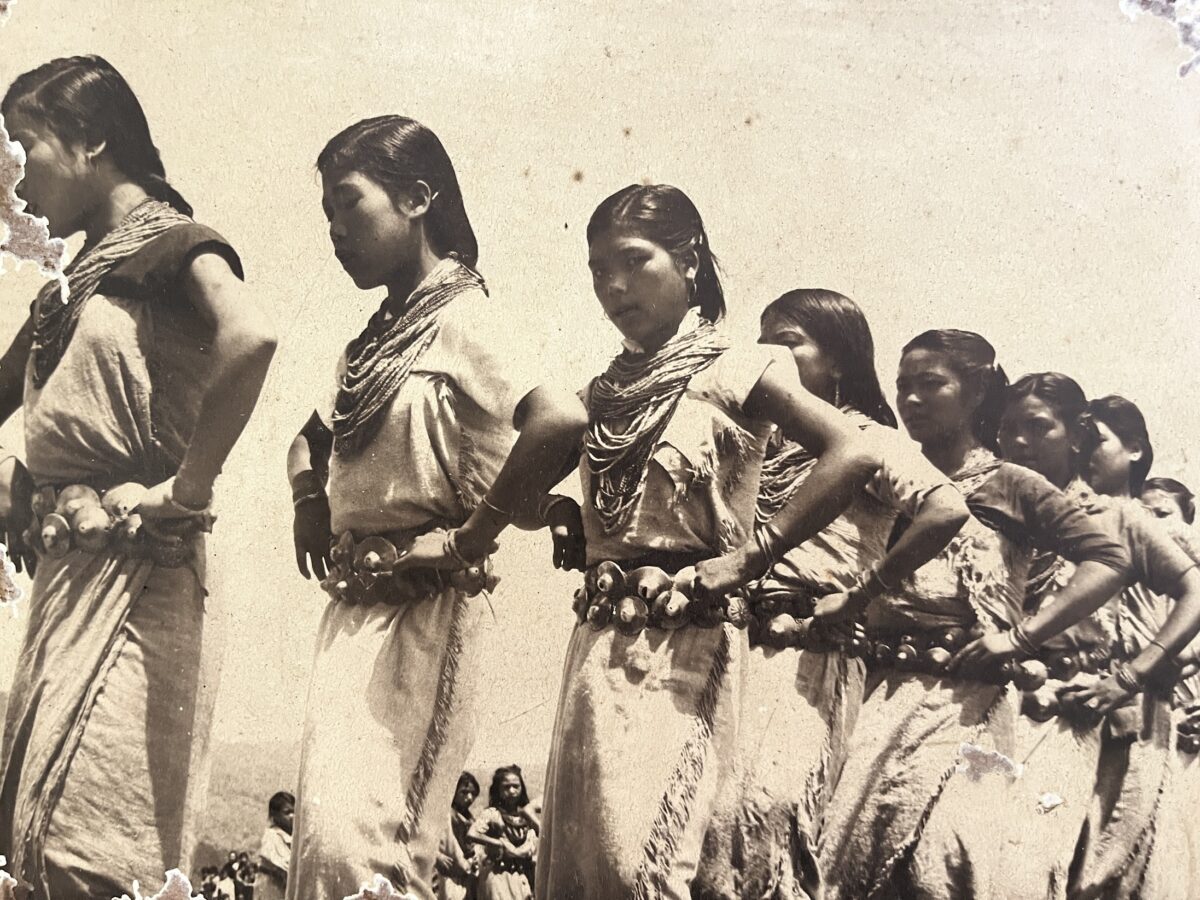
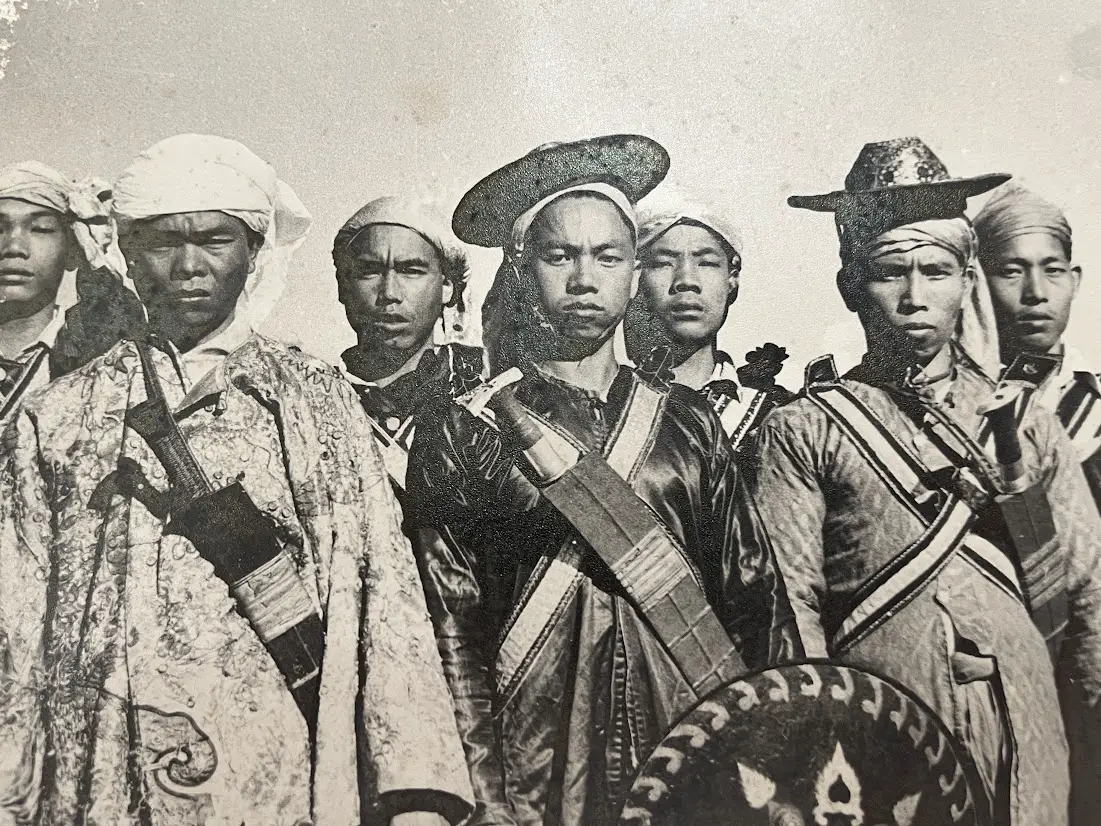
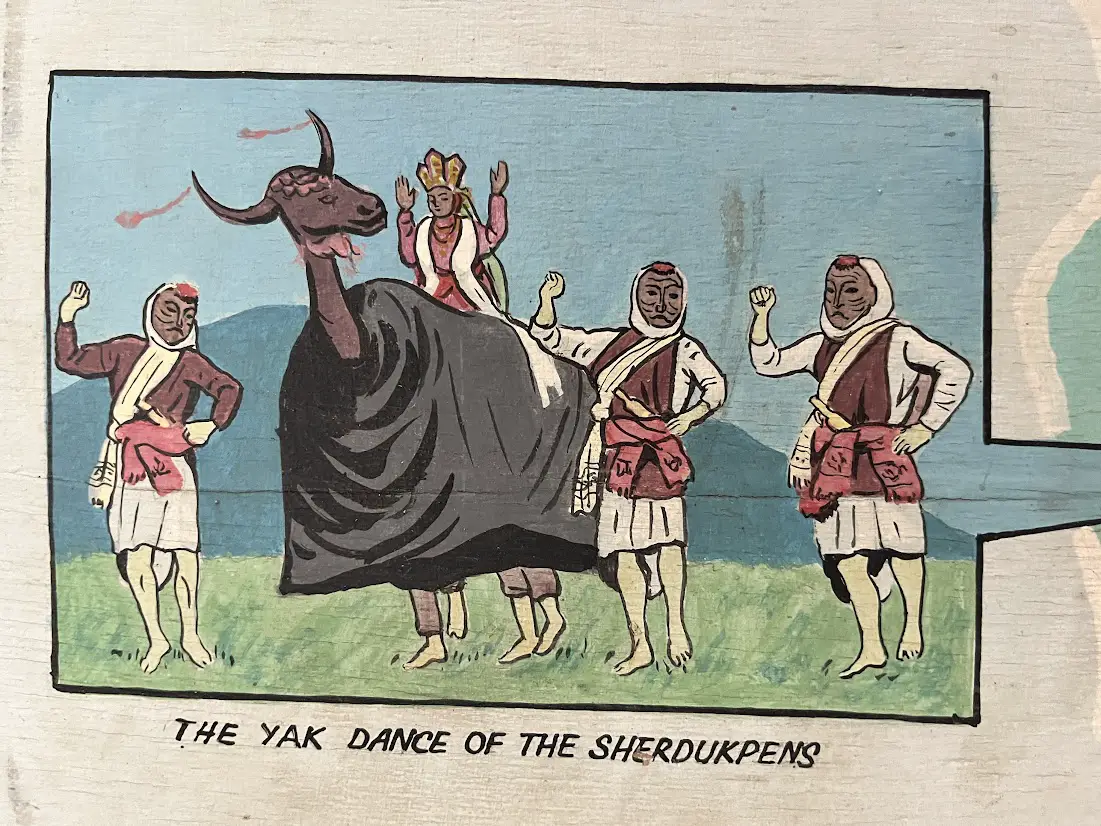
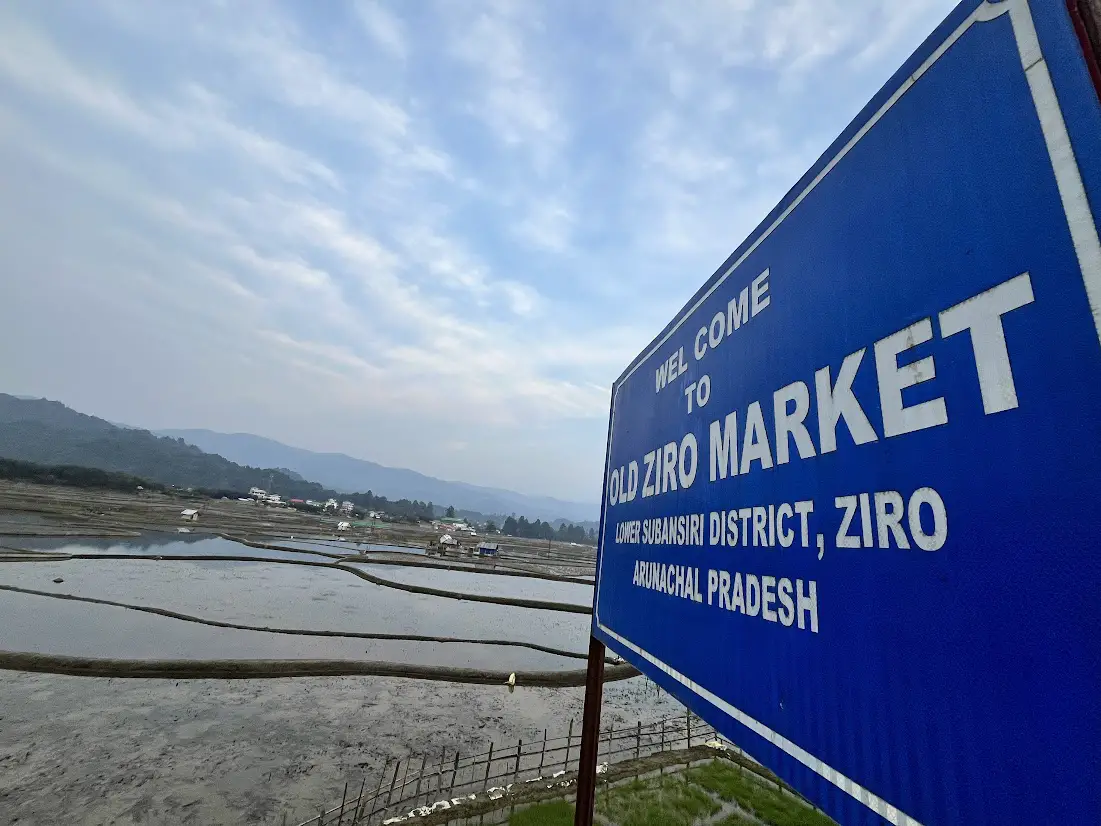
Ziro Valley is a place where nature, culture, and history blend seamlessly. Whether you’re exploring Apatani tribal villages, hiking to scenic viewpoints, or wandering through misty rice fields, every experience here feels deeply connected to the land. Below are the must-visit spots, including opening hours and local insights.
1. Ziro Music Festival
Held every September, the Ziro Music Festival is India’s biggest outdoor indie music festival. The setting is unreal—an open field surrounded by pine-covered hills—and the lineup features a mix of Indian and international artists. From folk and electronic to rock and fusion bands, the festival showcases independent music while immersing visitors in Ziro’s breathtaking landscape.
At night, temperatures drop sharply, so carrying warm clothes and a good sleeping bag is essential if you’re camping.
- Entry Fee: ₹5,000 (full festival pass), ₹1,500 (per day)
- Camping: ₹2,000 per tent (on-site)
- Best time to go: The last two days usually have the biggest performances
- Other travelers say:
- Pros: Amazing venue, great lineup, friendly crowd
- Cons: Very cold nights
2. Ziro District Museum
This museum is a must-visit for history lovers. It houses rare photographs, tribal artifacts, and traditional Apatani crafts, offering a glimpse into the unique traditions of Arunachal Pradesh’s indigenous tribes. Some exhibits explain the significance of Apatani tattoos and nose plugs, which were once used to protect women from raiders.
The museum also features old festival photographs, showing rituals like Dree Festival, where locals pray for a good harvest, and the high-risk pole-climbing tradition seen during Myoko Festival.
- Entry Fee: Free
- Opening Hours: 8 AM – 6 PM (Monday to Sunday)
- Address: Club Rd, Hapoli, Ziro, Arunachal Pradesh 791120
- Best time to visit: Late afternoon for a relaxed tour
- Other travelers say: The photo collection is amazing, but most descriptions are in the local language, so hiring a guide is helpful.
3. Hong Village – Apatani Tribal Culture
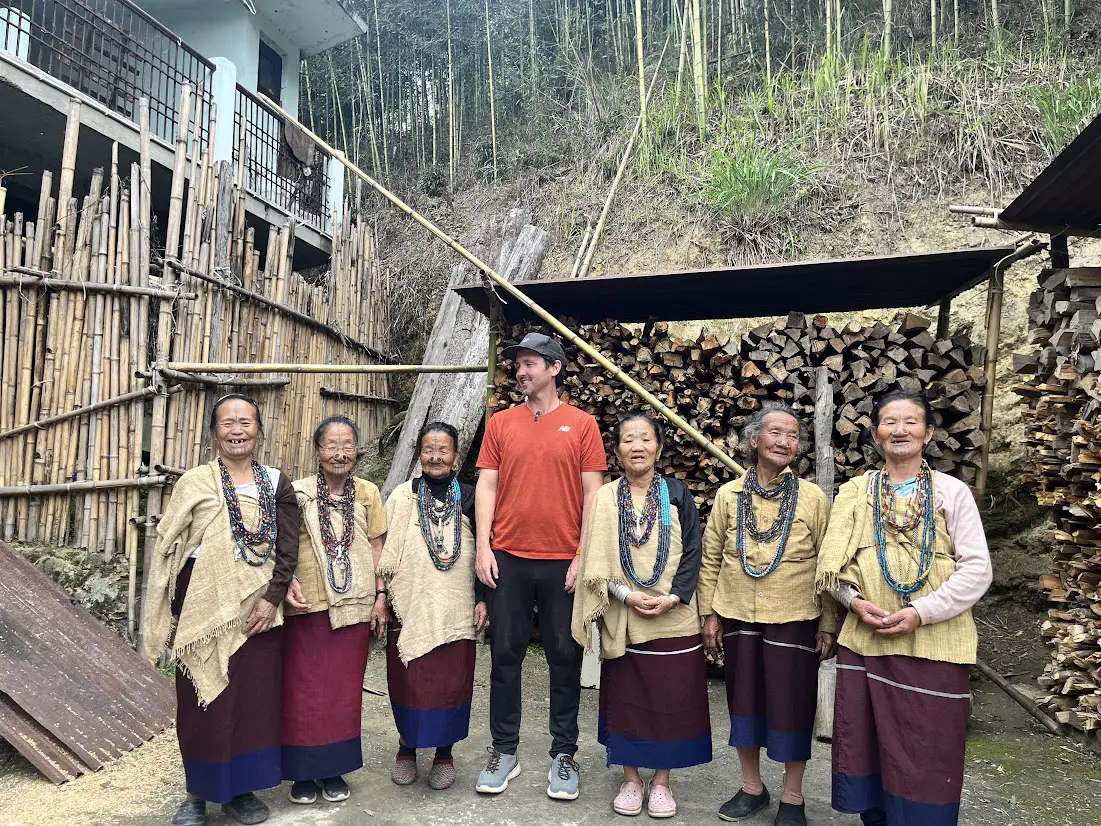
Hong is one of the largest and most traditional Apatani villages. Walking through the village, you’ll see bamboo houses built on stilts, women with nose plugs, and men carrying traditional knives. The Apatanis are famous for their unique farming system—they cultivate rice in wet terraces and breed fish in the same fields, a practice that has sustained them for generations.
I recommend hiring a local guide to fully understand the Apatani way of life, including their eco-friendly traditions, storytelling culture, and religious ceremonies.
- Entry Fee: Free (guided tours cost ₹2,000 – ₹5,000)
- Best time to visit: Early morning for a quieter village experience
- Other travelers say:
- Pros: Culturally rich, friendly locals, beautiful scenery
- Cons: Guides can be expensive, limited food options nearby
- Google Maps: Hong Village
- Local Guide: Contact Greener Pastures to get connected with a local guide
4. Meghna Cave Temple
This 300-year-old Shiva temple is hidden inside a rocky cliffside, offering a peaceful retreat with stunning valley views. The steep climb up to the temple is challenging but rewarding, with breathtaking vistas along the way. Many locals visit for prayers and meditation, and during festivals, the temple becomes a hub of activity.
- Entry Fee: Free
- Opening Hours: 4 AM – 5 PM (Monday to Sunday)
- Best time to visit: Early morning or sunset for clear views
- Other travelers say:
- Pros: Peaceful, spiritual atmosphere, great for photography
- Cons: Steep stairs, limited information on-site.
5. Kile Pakho Viewpoint
One of the best sunrise spots in Ziro, this hilltop viewpoint offers a split landscape view—on one side, the green terraced rice fields, and on the other, the snow-capped Himalayas. It’s a short 15-minute hike from the road, making it a quick but rewarding stop.
- Entry Fee: Free
- Opening Hours: Open 24 hours
- Best time to visit: Sunrise for the best views
- Other travelers say:
- Pros: Incredible scenery, easy hike, great for photography
- Cons: Bumpy road to reach, can be misty in the mornings
- Google Maps: Kile Pakho Viewpoint
Hidden Gems in Ziro Valley
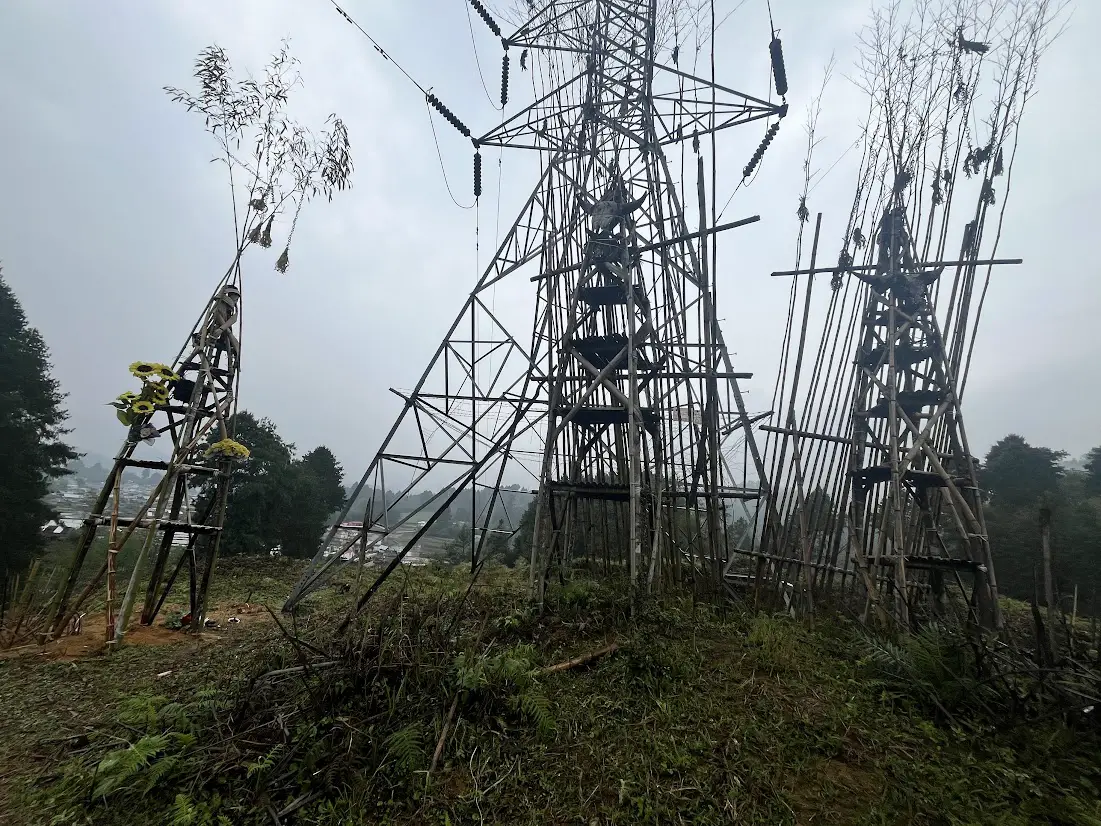
Pamu Yalang Viewpoint
This offbeat sunrise spot in Bamin Michi Village is a lesser-known alternative to Kile Pakho. The hike is slightly longer, but the views are just as stunning. Locals say it’s best for watching the mist rise over the valley in the early morning.
- Entry Fee: Free
- Opening Hours: Open 24 hours
- Best time to visit: Sunrise
- Other travelers say:
- Pros: Less crowded, untouched beauty, great for photography
- Cons: Remote location, road condition can be rough
Ziro Traditional Bamboo Graveyard
The Apatani people have a unique burial practice where graves are marked with bamboo poles instead of headstones. This sacred site is both beautiful and eerie, with rows of bamboo swaying in the wind. It’s a powerful reminder of the Apatani’s deep connection with nature.
- Entry Fee: Free
- Best time to visit: Afternoon for a quiet experience
- Other travelers say:
- Pros: Unique cultural insight, peaceful atmosphere
- Cons: Not a touristy spot, limited information available
Apong Rice Beer Brewery
Apong, the traditional rice beer of the Apatani tribe, is an essential part of their culture. It’s brewed using fermented rice and local herbs, resulting in a mildly alcoholic drink with an earthy flavor.
While there isn’t a large-scale brewery in Ziro, some locals offer small-batch brewing experiences where visitors can see the process and try freshly made Apong. These visits are informal, so it’s best to ask around in villages like Hong or Hari.
- Entry Fee: Free, but some locals may charge for tasting sessions
- Best time to visit: Afternoon or evening
- Other travelers say: Apong has a smooth, mildly sweet taste, and it’s best enjoyed with local bamboo-smoked meat. However, availability depends on the season and local brewers.
Where to Eat in Ziro Valley
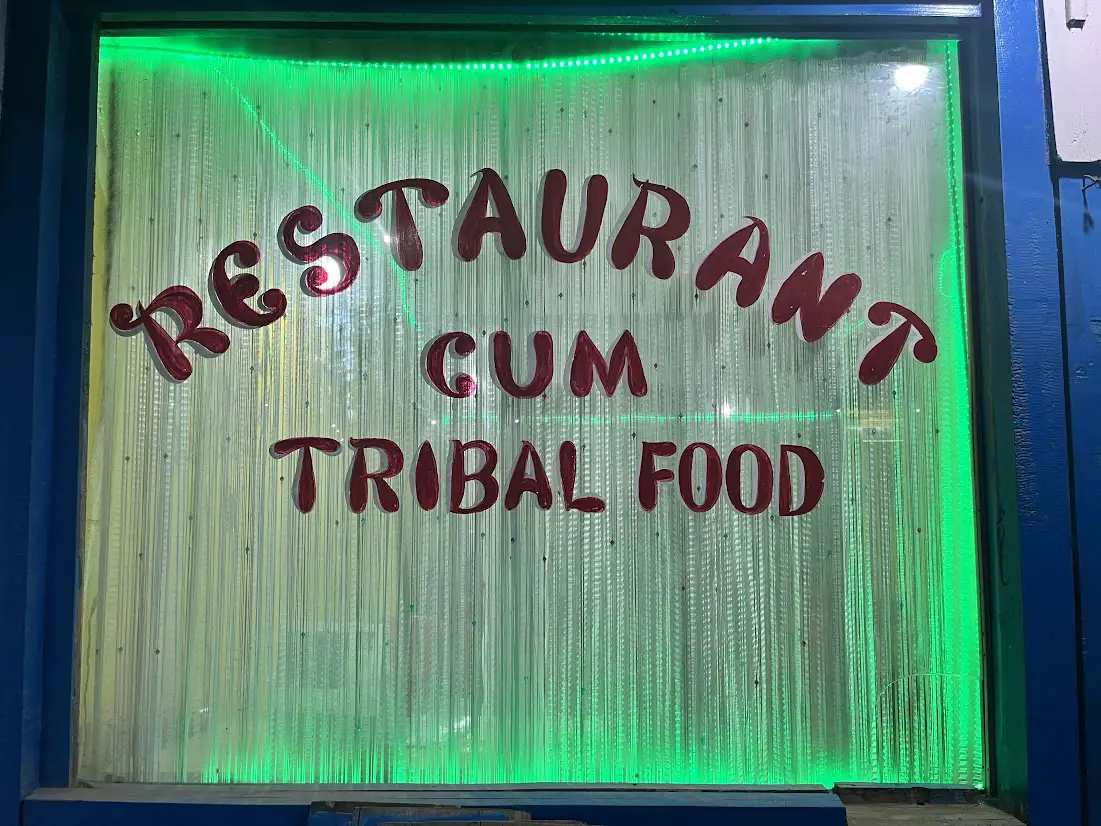
Food in Ziro is simple, fresh, and heavily influenced by Apatani culture. Most meals revolve around bamboo shoots, fermented soybeans, smoked meat, and sticky rice. I ate a lot of lo mein at small restaurants in Old Ziro, which was good at first but got repetitive after a few days.
Homestays and local kitchens serve the best food, offering dishes like pika pila (pickled pork with bamboo shoots), chura sabji (fermented cheese curry), and homemade Apong (rice beer).
Here’s where to eat in Ziro, from small roadside stalls to homestays serving traditional Apatani meals.
Siiro Resort Restaurant – Best for a Sit-Down Meal
The restaurant at Siiro Resort serves local Apatani cuisine alongside North Indian and Chinese dishes. It’s a nice place to sit down and enjoy a meal while taking in views of the surrounding hills. The menu includes thukpa, bamboo-smoked chicken, and momos, but the highlight is the sticky rice served with spicy chutneys and smoked meat.
- Famous dishes: Thukpa (veg & non-veg), bamboo-smoked chicken, Apatani-style pork
- Price range: ₹300 – ₹600 per meal
- Best for: Travelers wanting a relaxed meal with a view
- Other travelers say: The food is good but takes time to prepare, so it’s best to order ahead if you’re in a hurry.
- Google Maps: Siiro Resort
Blue Pine Restaurant – Best for Momos & Quick Bites
Located inside Hotel Blue Pine, this restaurant is known for momos, thukpa, and simple Indian dishes. It’s a reliable spot if you want something familiar without going too deep into local cuisine.
- Famous dishes: Veg & chicken momos, fried rice, thukpa
- Price range: ₹200 – ₹400 per meal
- Best for: Travelers looking for a quick meal
- Other travelers say: The momos are some of the best in Ziro, but the service can be slow during peak hours.
- Google Maps: Blue Pine Restaurant
Abasa Homestay & Restaurant – Best Traditional Apatani Food
This homestay also serves food to non-guests if you call ahead. Meals are home-cooked and focus on authentic Apatani flavors, including dishes like bamboo shoot fry, smoked pork, and local vegetables cooked over wood fire.
- Famous dishes: Bamboo shoot fry, smoked pork, sticky rice
- Price range: ₹500 – ₹700 per meal (pre-booking required)
- Best for: Those wanting a traditional home-cooked Apatani meal
- Other travelers say: The food is incredible and worth the wait, but you need to book in advance since they cook fresh for each guest.
- Google Maps: Abasa Homestay
Ziro Valley Restaurant & Lodges – Best for Smoked Meat
Located at Ziro Valley Resort, this restaurant is a good place to try smoked meats and spicy Apatani chutneys. The menu is limited but well-prepared, focusing on local flavors rather than an extensive selection.
- Famous dishes: Smoked chicken, spicy chutneys, fish curry
- Price range: ₹300 – ₹500 per meal
- Best for: Travelers wanting a taste of Apatani smoked meats
- Other travelers say: The smoked chicken is excellent, but the restaurant has limited options if you’re vegetarian.
Hidden Gem: Small Lo Mein Stalls in Old Ziro
I ate at several small local stalls in Old Ziro, serving hot plates of lo mein. These places are great for a cheap, filling meal, and the food is surprisingly flavorful for how simple it is.
- Famous dishes: Lo mein, chow mein, fried rice
- Price range: ₹100 – ₹250 per meal
- Best for: A quick, affordable meal
- Other travelers say: The food is consistently good, but options are limited beyond noodles and fried rice.
How to Get to Ziro Valley
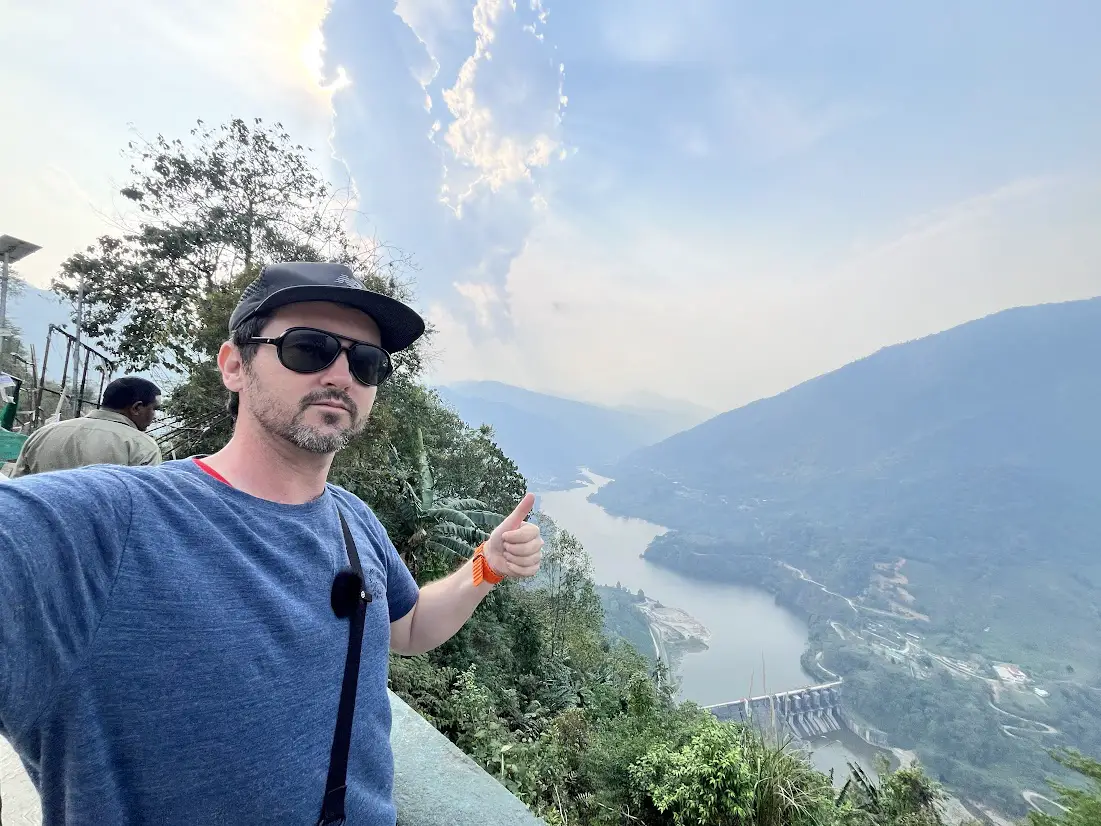
There’s no airport or railway station in Ziro, so you’ll need to combine flights, trains, or long drives to get here. The journey is scenic, passing through dense forests, winding mountain roads, and small villages, but expect some bumpy sections along the way.
Here’s the best way to reach Ziro, depending on where you’re coming from.
Which Route is Best?
- Fastest Option: Fly to Lilabari + Taxi to Ziro (6 hours).
- Most Comfortable: Train to Naharlagun + Private Taxi (5-6 hours).
- Budget Option: Bus from Itanagar (7-8 hours).
By Air – Nearest Airport & Flights
The closest airport is Lilabari Airport (North Lakhimpur, Assam), about 110 km from Ziro. It’s a small airport with limited flights, mostly from Guwahati and Kolkata. From Lilabari, you’ll need to take a shared taxi or private car to Ziro.
- Best Airport: Lilabari (IXI), Assam
- Flights From: Guwahati, Kolkata (check seasonal availability)
- Taxi Cost to Ziro: ₹4,000 – ₹5,000 (6 hours, private)
- Shared Taxi Cost: ₹800 – ₹1,500 per person (if available)
- Other travelers say: The drive from Lilabari is scenic but long, and flights to Lilabari are often delayed or canceled due to weather.
If flights to Lilabari aren’t available, the next best option is to fly to Guwahati, then take a train or bus to Ziro.
By Train – Best Railway Station for Ziro
The closest railway station is Naharlagun (Arunachal Pradesh), about 100 km from Ziro. It’s well-connected with Guwahati and New Delhi and is a good option if you prefer trains over flights. From Naharlagun, you’ll need to take a shared taxi or a bus to reach Ziro.
- Best Train Station: Naharlagun (NHLN), Arunachal Pradesh
- Train Options:
- Donyi Polo Express (Train No. 15817/15818) – Runs daily from Guwahati to Naharlagun (~8 hours).
- Arunachal Express (Train No. 22411/22412) – Runs twice a week from New Delhi to Naharlagun (~35 hours).
- Taxi Cost to Ziro: ₹3,000 – ₹4,000 (5-6 hours, private)
- Other travelers say: The Donyi Polo Express is comfortable, but train delays are common, so plan accordingly.
By Road – Bus & Taxi Options
For budget travelers, taking a bus or shared taxi is the cheapest way to reach Ziro. The roads are winding and sometimes rough, but the scenery makes up for it.
- From Guwahati: Overnight bus to Itanagar, then another bus/shared taxi to Ziro (~18-20 hours total).
- From Itanagar: Daily buses and shared taxis run from the Arunachal Pradesh State Transport Service (APSTS) bus station (~7-8 hours).
- Bus Cost: ₹400 – ₹600 (basic government buses)
- Shared Taxi Cost: ₹700 – ₹1,200 per person
- Other travelers say: The buses are cheap but slow, while shared taxis are faster but cramped.
Once you arrive, taxis and bike rentals are available to explore the valley. Up next: essential travel tips for Ziro Valley! 🚀
Essential Travel Tips for Ziro Valley
Ziro is one of the most unique destinations in India, but it’s also remote and not as developed for tourism as other places. Planning ahead will make your trip much smoother. From permits to phone networks, here’s everything you need to know before visiting.
Permits Required
Arunachal Pradesh requires an Inner Line Permit (ILP) for all non-residents, including Indian travelers. Foreigners need a Protected Area Permit (PAP) and must travel in a group of at least two people. ILPs can be applied for online or at designated offices in Guwahati, Itanagar, and other major cities.
- ILP Cost: ₹100 – ₹400, depending on the duration
- Where to Apply: Arunachal ILP Official Website
- Processing Time: Online ILPs are usually approved within 24 hours
- Other travelers say: The online ILP system is convenient, but sometimes approvals are delayed, so apply at least a few days in advance.
Best Time to Visit
Ziro’s weather varies a lot, so timing your trip right is key. March to April is ideal for pleasant weather and green landscapes, while September is perfect if you want to experience the Ziro Music Festival. Winters are beautiful but very cold at night.
- Best Months: March-April (for nature) | September (for music festival)
- Avoid: June-August (heavy monsoons can make travel difficult)
- Other travelers say: September is amazing for the festival, but accommodation fills up fast—book early.
Phone & Internet Connectivity
Ziro has limited phone network coverage, and internet speeds are slow. Airtel works best, while Jio is unreliable. Most homestays and hotels have WiFi, but it’s often weak.
- Best SIM Card: Airtel
- Internet Quality: Slow in most places, almost nonexistent in rural villages
- Other travelers say: Download maps and important info beforehand, as mobile data can be unreliable.
Packing List
Ziro’s weather can change quickly, so pack for both warm days and chilly nights. Expect uneven roads and muddy trails, so comfortable shoes are a must.
- Must-Pack Items: Warm clothes, rain gear (if visiting in monsoon), good walking shoes, power bank, cash (limited ATMs), and sunscreen
- Other travelers say: Nights can get surprisingly cold, even in summer, so bring layers.
Local Transport
Ziro doesn’t have auto-rickshaws or app-based taxis like Ola or Uber, so you’ll need to rely on local taxis or bike rentals.
- Taxis: ₹100 – ₹300 for short rides, ₹3,000 – ₹5,000 per day for a private car
- Bike Rentals: Available from locals, around ₹500 – ₹1,000 per day
- Other travelers say: Renting a bike is the best way to explore, but roads can be rough, so drive carefully.
With these tips in mind, you’ll be well-prepared for your trip to Ziro. Up next: final thoughts and why this place is worth visiting! 🚀
Final Thoughts: Why Ziro Valley is Worth Visiting
Ziro Valley is one of those places that doesn’t try to impress you—it just exists in its own world.
The beauty here isn’t flashy; it’s in the slow rhythm of daily life, the fog rolling over rice paddies at sunrise, and the Apatani people’s deep connection to their land and traditions.
Whether you’re here to experience the Ziro Music Festival, explore bamboo villages, or just escape into nature, the valley has a way of making you feel like you’ve stepped into a different time.
That being said, Ziro isn’t for everyone. It’s remote, the food options are limited, and getting here takes effort. But if you’re someone who enjoys quiet places, rich culture, and offbeat destinations, Ziro will reward you with stories, experiences, and landscapes you won’t find anywhere else in India.
If you’ve been to Ziro Valley, let me know in the comments—what was your favorite part of the trip? And if you’re planning to go, feel free to ask any questions. Safe travels! 🚀

